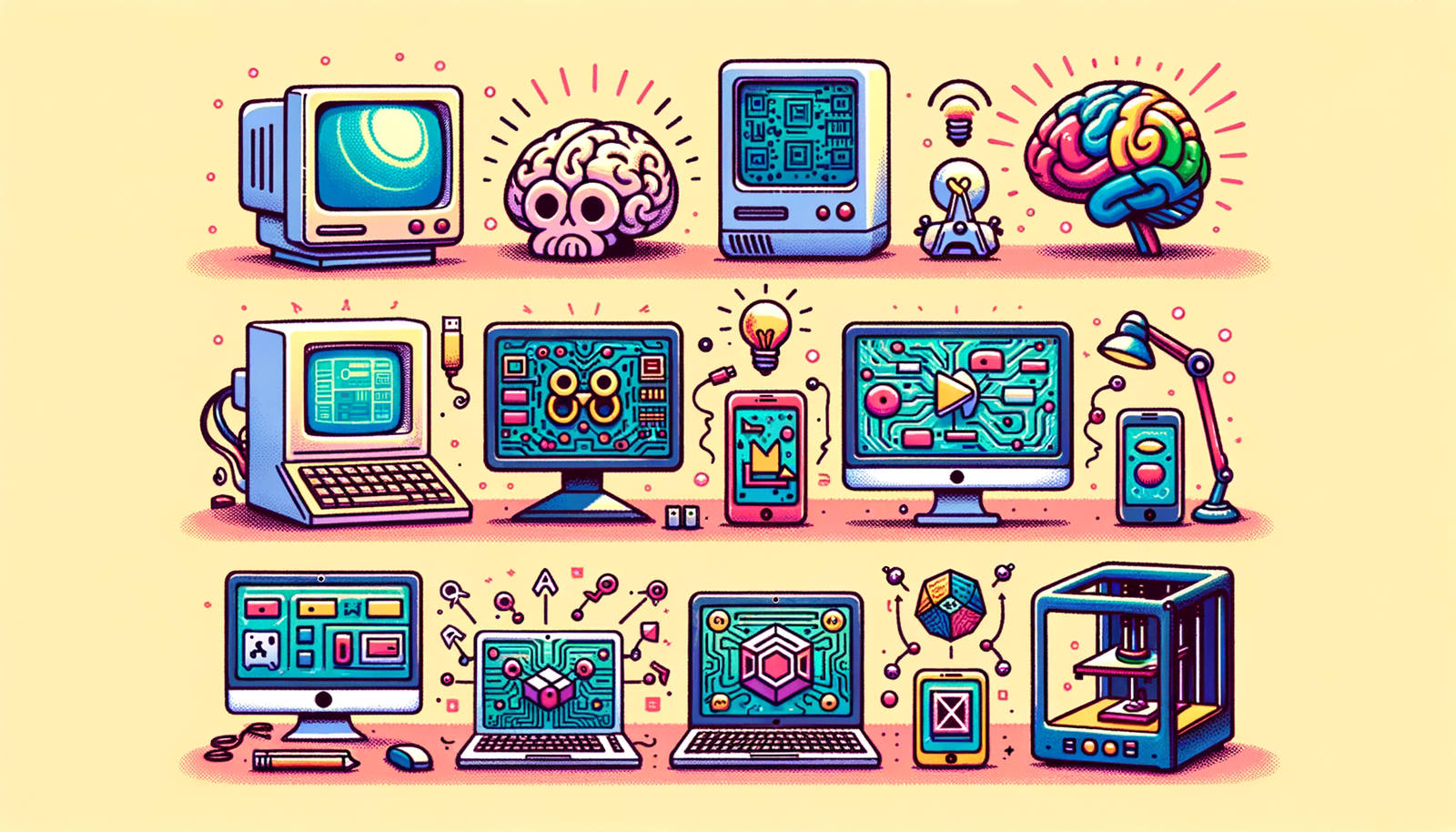Your Cart is Empty
The Early Beginnings of Design Software
The advent of design software marks one of the most transformative periods in engineering, architecture, and creative industries. The journey begins with the **inception of Computer-Aided Design (CAD)**, which can be traced back to the groundbreaking work of Ivan Sutherland. In 1963, Sutherland developed Sketchpad as part of his Ph.D. thesis at MIT. Sketchpad was revolutionary as it introduced the concept of a graphical user interface, allowing users to interact with the computer graphically through a light pen. This innovation laid the foundation for the development of future CAD systems.
Sketchpad's introduction allowed for the direct manipulation of graphic elements, such as lines and shapes, on a screen. It also featured constraints to maintain geometric relationships, a concept that is still integral to modern CAD software. Sutherland's work demonstrated the potential of computers to aid in design and paved the way for further exploration into graphical interfaces and user-friendly design tools.
Beyond the graphical user interface, the **foundational technologies and theories** that emerged during this period were crucial. Basic geometric modeling concepts began to take form, facilitated by early computational theories and the growing power of computers. These included the representation of objects in a digital space and the manipulation of these objects using mathematical models. Early CAD systems leveraged fundamental principles of geometry, enabling the creation and modification of two-dimensional (2D) and three-dimensional (3D) shapes.
Mathematical models, such as those described by René Descartes and Pierre-Simon Laplace, provided a theoretical underpinning for these developments. The application of linear algebra and matrix transformations allowed for the manipulation of geometric entities in a digital environment. These early advancements set the stage for more sophisticated modeling techniques and the eventual evolution of solid modeling.
Key Innovations and Milestones in Solid Modeling
As CAD systems evolved, the **birth of solid modeling** marked a significant milestone in the history of design software. Solid modeling refers to the representation of solid objects in a digital space, providing a more comprehensive and accurate depiction compared to wireframe or surface models. This development was spearheaded by Herbert Voelcker and his team at the Production Automation Project (PAP) at the University of Rochester in the 1970s.
Voelcker's team introduced key concepts such as **Boundary Representation (B-Rep)** and **Constructive Solid Geometry (CSG)**. B-Rep represents a solid object by defining its boundaries, including vertices, edges, and faces. This method provided a precise and unambiguous representation of complex geometric shapes. On the other hand, CSG uses Boolean operations to combine simple shapes into more complex forms, allowing for the creation of intricate models through union, intersection, and difference operations.
The **commercialization and software development** of solid modeling technologies followed closely behind these theoretical advancements. Early commercial solid modeling software, such as Romulus and Uni-Solid, emerged in the late 1970s and early 1980s. Romulus, developed by Ian Braid and his team, was one of the first commercially available solid modeling systems and laid the groundwork for future CAD software.
During this period, several CAD software packages gained prominence, including CATIA, Pro/ENGINEER, and SolidWorks. CATIA, developed by Dassault Systèmes, became a dominant player in the aerospace and automotive industries due to its advanced surface and solid modeling capabilities. Pro/ENGINEER, created by PTC, introduced parametric modeling, allowing for the modification of design parameters and automatic updates to the model. SolidWorks, developed by Dassault Systèmes, brought user-friendly, feature-based solid modeling to a broader audience, revolutionizing the way engineers and designers approached their work.
Evolution and Diversification of Design Software
The transition from 2D to 3D CAD systems marked a pivotal moment in the **evolution and diversification of design software**. This shift was driven by advancements in computer hardware and software, enabling more complex and realistic representations of objects. Key milestones in this transition include the development of geometric modeling kernels, such as Parasolid and ACIS, which provided the underlying computational framework for 3D modeling applications.
Parasolid, developed by Shape Data Limited and later acquired by Siemens PLM Software, became a widely adopted geometric modeling kernel due to its robustness and versatility. ACIS, developed by Spatial Technology, offered an alternative kernel with a focus on ease of integration and extensibility. These kernels allowed for the creation of sophisticated 3D models, supporting a wide range of design and engineering applications.
In addition to geometric modeling, the **integration of engineering computations and analysis** into CAD software expanded its capabilities and utility. Early Finite Element Analysis (FEA) software, such as NASTRAN and ANSYS, enabled engineers to simulate and analyze the behavior of structures and components under various conditions. FEA software leveraged advanced mathematical techniques to divide complex geometries into smaller elements, facilitating the calculation of stresses, strains, and other critical parameters.
Companies like ANSYS played a pivotal role in advancing simulation and analysis technologies. ANSYS's comprehensive suite of tools allowed engineers to perform multi-physics simulations, optimizing designs for performance, safety, and efficiency. The integration of FEA into CAD software enabled a seamless workflow from design to analysis, reducing the need for physical prototyping and accelerating the product development process.
Modern Design Software and Emerging Technologies
The rise of **additive manufacturing and product visualization** has further transformed the landscape of design software. Additive manufacturing, commonly known as 3D printing, allows for the creation of complex geometries through layer-by-layer material deposition. Design software plays a crucial role in preparing digital models for 3D printing, ensuring accuracy and optimizing the printing process.
Advancements in product visualization and rendering technologies have also enhanced the capabilities of modern design software. High-fidelity rendering tools, such as those found in software like KeyShot and V-Ray, enable designers to create photorealistic images and animations of their models. These tools facilitate better communication of design intent and allow for more effective marketing and presentation of products.
Looking forward, **future trends and innovations** continue to shape the development of design software. Cloud-based design platforms, such as Onshape and Fusion 360, offer collaborative and accessible solutions for engineering and design teams. These platforms leverage cloud computing to provide real-time collaboration, version control, and access to powerful computational resources.
The integration of artificial intelligence (AI), virtual reality (VR), and collaborative tools is also driving the evolution of design software. AI-powered features, such as generative design, automate the creation of optimized designs based on specified constraints and objectives. VR technology allows designers to immerse themselves in virtual environments, providing new ways to interact with and evaluate digital models. Collaborative tools facilitate seamless communication and coordination among team members, enhancing productivity and innovation.
In summary, the history of design software is marked by continuous innovation and the convergence of diverse technologies. From the early days of Sketchpad to the modern era of AI and cloud-based design, these advancements have revolutionized the way we create, analyze, and visualize products. As technology continues to evolve, the future of design software promises even greater capabilities and opportunities for innovation.







